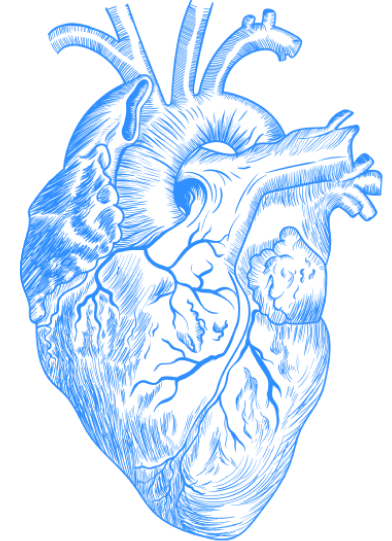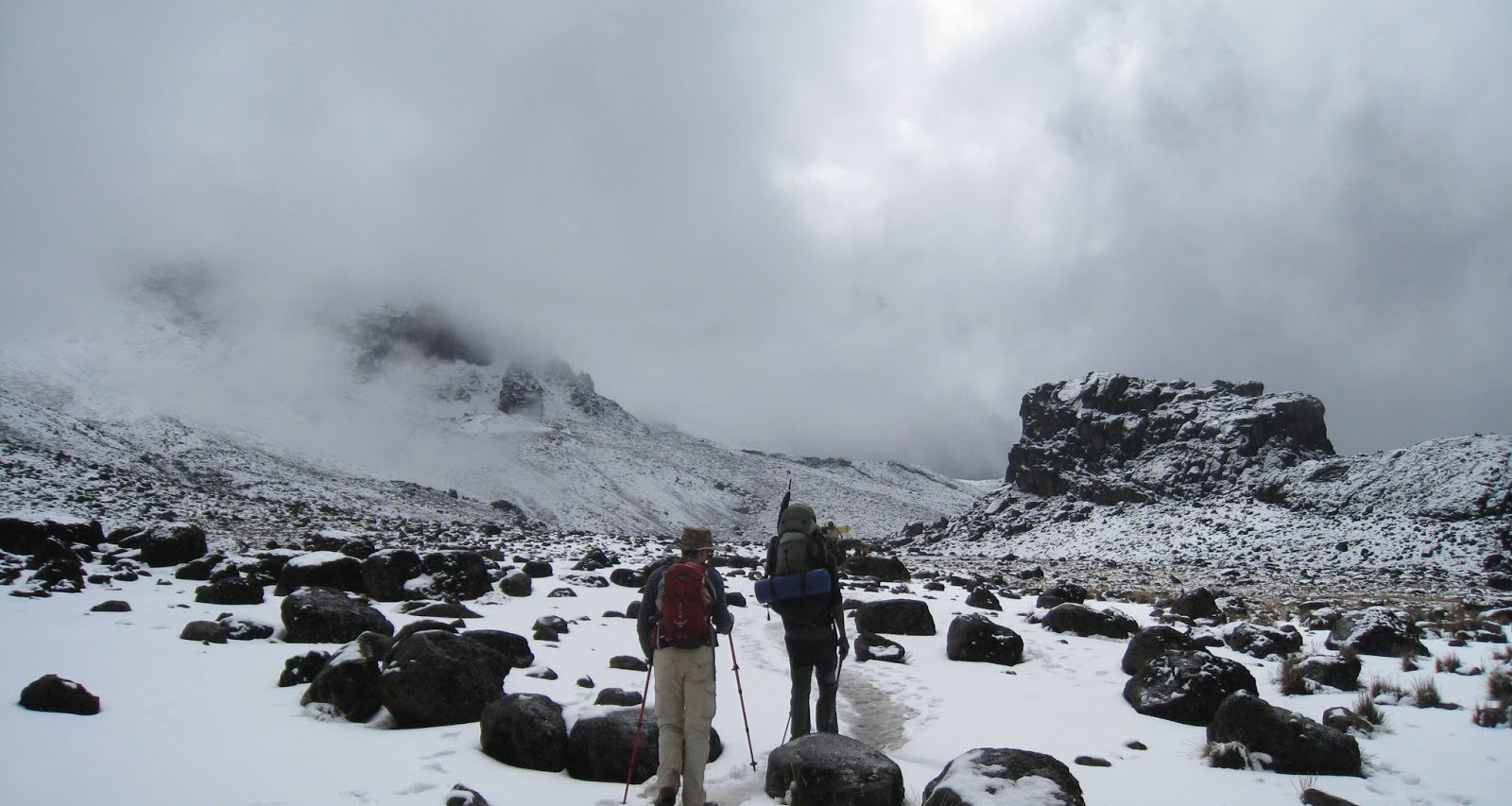
The imposing mountain of Kilimanjaro in the East African country of Tanzania stands alone amidst the surrounding flatlands and swallows up the horizon with its snow-capped peaks. At once alluring and intimidating, its enormous size provides the kind of thrill and sense of wonder that a child must feel when it becomes conscious of the seemingly infinite universe. This impression, I imagine, drove explorers a hundred and fifty years ago to try to climb
the mountain’s approximately 19,000-foot
peak. In 1861, for example, Baron Karl Klaus von der Decken, a German explorer,
attempted to summit Kilimanjaro
with English geologist Richard Thornton. Poor weather prevented the completion of their trek. A year later, von der Decken tried again, but once more the weather stymied his ascent. Others made further unsuccessful efforts in the decades that followed, but in 1889 a German geologist, Hans Meyer, and an Austrian gym teacher and mountaineer, Ludwig Purtscheller, became the first to reach Kilimanjaro’s highest peak.
Since then, thousands have traveled to Tanzania to brave the altitude and sub-zero temperatures and to climb the mountain. A friend and I, during our last year of medical school, were two of those people. We wanted to do something truly unusual, a trip that would take us as far as possible away from the hospital to a world we might never get a chance to see again. It is not unusual for fourth-year medical students to take a trip like this — a last hurrah of sorts before graduation. And, of course, one hopes that after separating oneself from medicine one would return to the hospital world refreshed, motivated, and ready to begin the grueling process of residency.
 |
| My friend and our guide, about two days before reaching the summit of Mt. Kilimanjaro. Photo: Aaron Rothstein |
One of the most notable aspects of climbing Kilimanjaro is of course its high altitude. Because the partial pressure of oxygen in the air decreases as one ascends, tissues within the body require higher volumes of blood to get the same amount of oxygen. For comparison, at Mount Everest Base Camp on the Nepalese side (at 5,360 meters or 17,600 feet elevation), the partial pressure of oxygen is half of what it is at sea level; Kilimanjaro stands at around 5,900 meters or 19,300 feet. At these heights the body must adjust to compensate for the drastic decrease in oxygen availability. During the earliest stages of exposure to high altitude, the respiratory rate increases to take in more oxygen, the heart rate goes up to deliver more oxygen to the tissues, and the blood concentrates oxygen-carrying hemoglobin by getting rid of excess fluid (this is called altitude diuresis and it is why one urinates more at higher altitudes). Then, if one spends several months at high altitudes, the body further adjusts by increasing the number of red blood cells through the release of erythropoietin, a hormone that acts on the bone marrow to increase red blood cell production.
The way exposure to high altitude manifests itself on a step-to-step basis is remarkable. As my friend and I ascended, it became more and more difficult to hike. Shortness of breath plagued us at slight inclines or fast-paced walks. Eventually, at the top, the slow slog felt like a sprint, our bodies desperately crying out for air. But it wasn’t just this odd sensation that was new to us. Climbing at these altitudes comes with certain risks, some of which can be deadly and which we got to experience up close.
The night we began our hike we awoke close to midnight, unzipped the tent, and stepped out into the bitter cold night air. The stars playfully glistened in the clear sky reaching out in all directions. We drank hot tea, ate some porridge, and headed on our way. Despite the brightness of the moon, we needed headlamps to see the details on the path before us, especially as ice covered every inch of ground. In the distance we saw other trekkers only by the small lights of their headlamps, tens of them slowly ascending, enveloped by darkness.
But there was one light that seemed to be getting closer rather than farther. And it seemed to be trembling, its owner unsteady. It was an unsettling sight, but we couldn’t keep looking as we were in the midst of trying not to fall, while also sipping water from our backpacks almost continuously so that it wouldn’t freeze. When we finally managed to look up again, the light was much closer and we made out two people in the pitch black: one was a Tanzanian guide and the other was a Caucasian hiker leaning on the guide for support. As they passed us the hiker slipped, barely able to stand on his own feet. We turned around and asked what had happened: “He fell and hit his head and a team is on the way to come help him down,” the guide answered. It seemed unusual that a head injury would make a patient this unsteady. But there were no medical supplies, no places for a med-evac to land, and no oxygen tanks. The only option for the hiker was to get down to base camp as quickly as possible. So the patient’s guide continued on, supporting the man as they descended the mountain.
What had actually happened was something far more serious. The hiker had High Altitude Cerebral Edema (HACE). People who live at low altitudes and suddenly ascend are at risk for this particularly affliction and it can occur at altitudes anywhere over 8,200 feet. Symptoms initially include altered mental status, unsteadiness or dizziness, nausea, vomiting, headache, and drowsiness, progressing over hours to days. With decreased availability of oxygen, there is an increase in the body’s stress response leading to vessel dilation and increased blood flow to the brain. Pressure increases within the vasculature of the brain as autoregulation of pressure is impaired. Fluid leaks out from the cerebral vessels, creating higher and higher pressures within the fixed compartment of the skull. With no place left to go, the brain herniates downward through the foramen magnum (the hole in the base of the skull through which the spinal cord connects with the brain). This will cause death.
The best treatment for HACE is to descend as quickly as possible to lower altitude. Supplementary oxygen can help, as can steroids (to decrease swelling), but these are merely temporary fixes to a deadly problem. And that night, the climber, with no oxygen, no steroids, and no chance of descending in time, died from HACE shortly after we passed him. On our descent we found out the news and even saw his body. A blanket covered the outline of a human form, still, silent, with no chest rise or fall.
The moment, in some respect, tainted our trip. Was there more we could have done? It appeared to be a hopeless situation and, in the thick of that night, gasping for air in the freezing cold as we let the man and his guide move on, we wondered if there was more. Nevertheless, short of helping him down, which would not have happened in time to prevent his demise, there was no equipment, no medication, no treatment we could have offered.
 |
| Mt. Kilimanjaro, about one day before reaching the summit. Our path took us around to the other side of the mountain before our final ascent. Photo: Aaron Rothstein |
In the 2015 New York Times article Is There a Doctor in the Marriage?, the writer Anya Groner discusses her husband’s grueling hours as a doctor. After he assists with a medical emergency during a plane ride, she realizes that he is, in some sense, always on call. Work is ever present. Whether there is turmoil in one’s thoughts about a patient or whether one is being asked advice by friends or family, the profession demands constant alertness and preparedness. Even on the slopes of Kilimanjaro, which only a century and a half ago hardly anyone dared to climb, medicine followed us. If we have any sort of conscience, there is no escaping the practice of medicine. This is why we must love what we do, but it is also why we must be prepared to live with it wherever we go.
